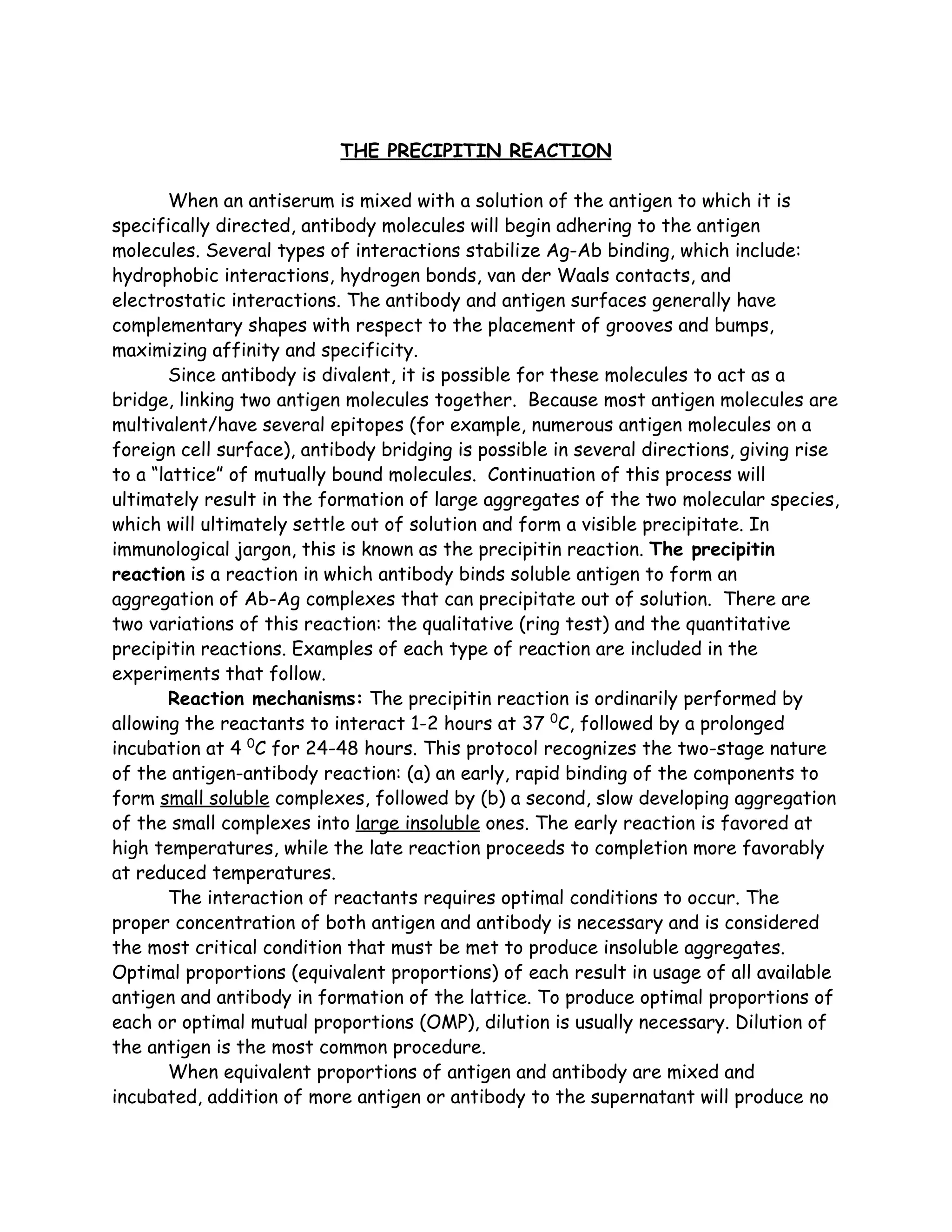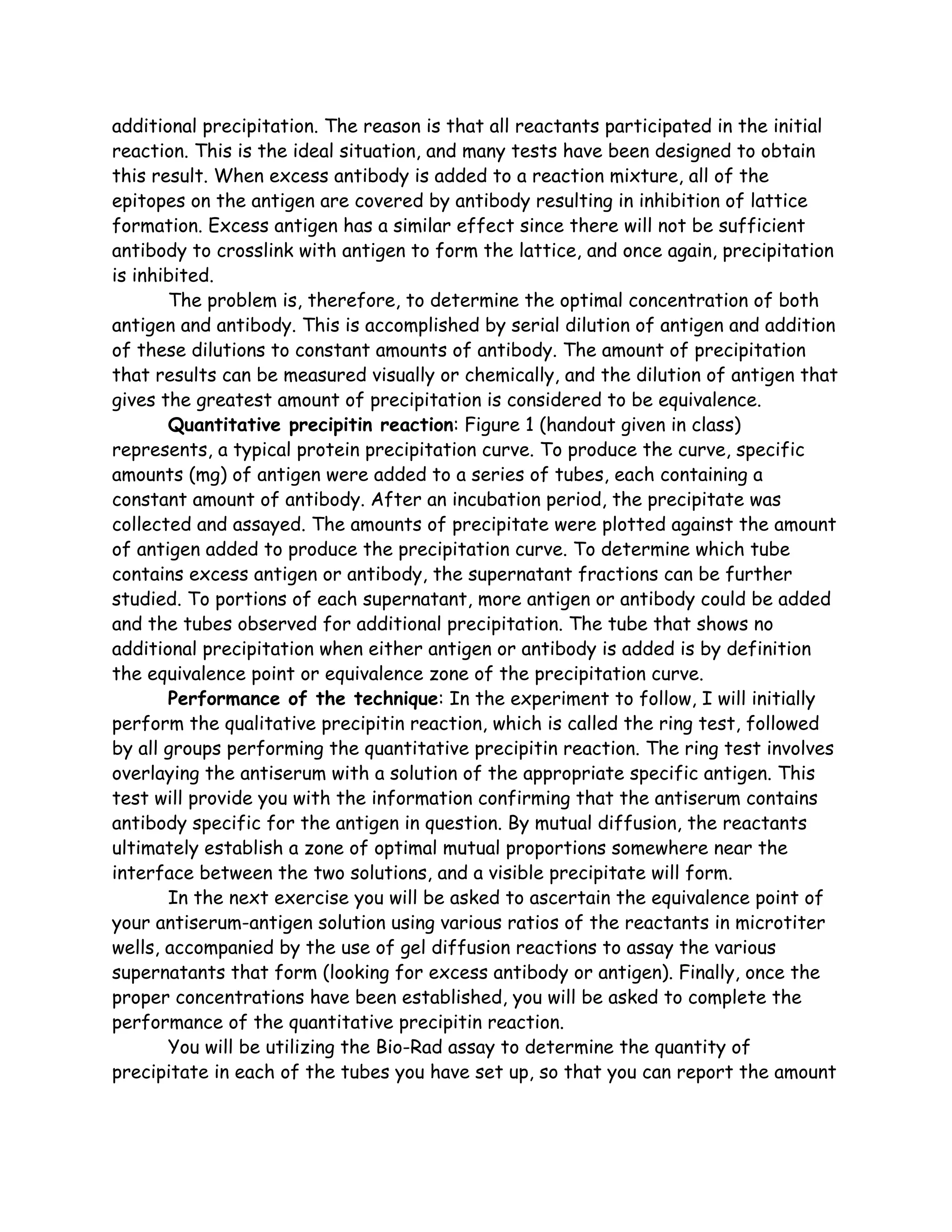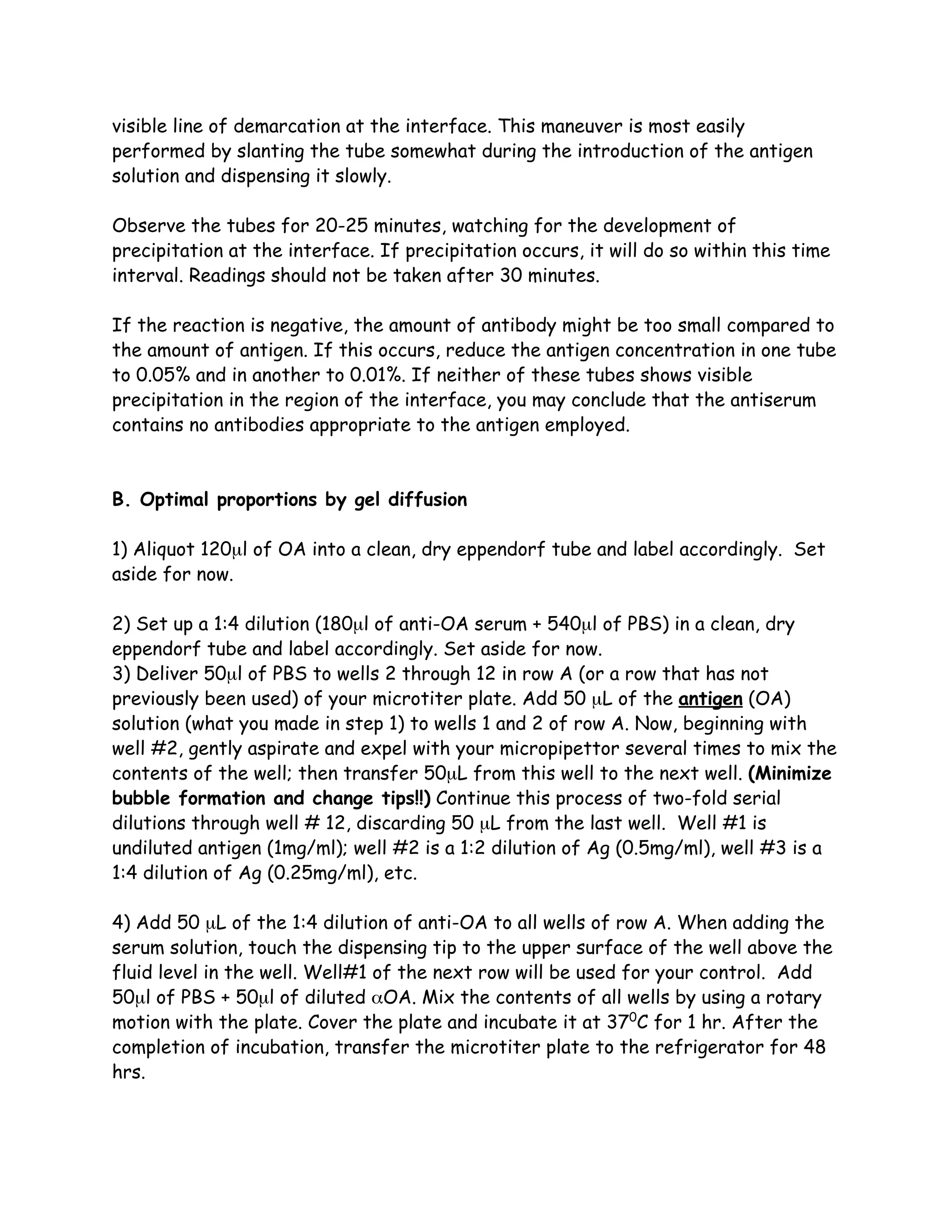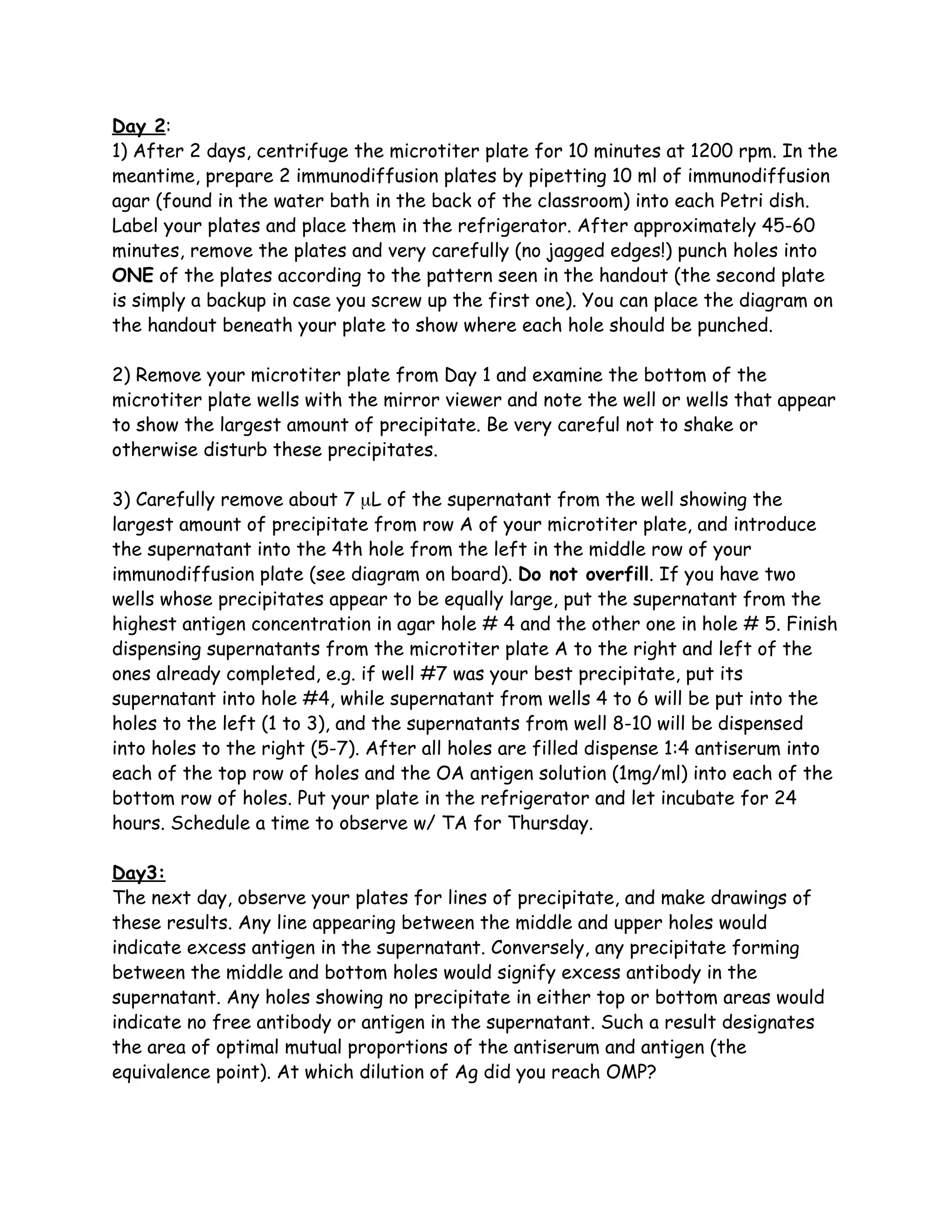When an antiserum is mixed with the antigen it is directed against, antibody molecules will bind to antigen molecules via various interactions. Since antibodies are divalent, they can act as bridges between antigens, linking antigens together and forming aggregates. Continued bridging results in large precipitates that settle out of solution, known as the precipitin reaction. The precipitin reaction involves determining the optimal mutual proportions of antigen and antibody that result in maximum precipitation to identify the equivalence point.


![of antibody protein present in your undiluted antiserum. This reaction must be
performed with extreme care to detail to obtain accurate results.
Objectives:
Understand the biological basis of the precipitin reaction
Understand the purpose of each step of the precipitin reaction
Be able to define and understand OMP.
At OMP, [ppt] = [antigen] + [antibody]
Precipitation curve: how is it constructed? Equivalence zone? Excess antigen and
antibody zone?
Be able to compare and contrast the precipitin and the agglutination reactions
Materials:
15ml conical tubes, eppendorf tubes
Pasteur pipettes with rubber bulb
Antibody solution (anti-ovalbumin, αOA) diluted 1:4 using 1x PBS
Antigen solution (OA): 1mg/ml
Normal rabbit serum – 0.4ml
Diluting solution, 1x PBS
Microtiter plate (round bottom)
Immunodiffusion agar: 1% in PBS
Bio-Rad dye
Sterile Petri dish
Agar hole puncher with rubber bulb
Moist chamber
Microtiter plate viewer with mirror
Procedure
Day 1
A. The Ring test (I will demonstrate this to class)
Using a Pasteur pipette, introduce a small amount of antiserum directly into the
bottom of a clean glass tube, withdrawing the pipette slowly and carefully so as not
to leave any serum in the insides of the tube. Use one hand to insert or retrieve
the pipette and the other to steady the tip as it is being moved in or out of the
tube. Repeat the procedure in a separate clean glass tube using normal rabbit
serum instead of antiserum and use a different Pasteur pipette.
Next, carefully overlay an equal volume of antigen solution using a different
Pasteur pipette, so that it floats in the surface of the antiserum. You should see a](https://image.slidesharecdn.com/precipitinprotocol-120408151004-phpapp02/75/Precipitin-protocol-3-2048.jpg)


![C. The quantitative precipitin reaction (following week)
You will work in larger groups for this week (in tables).
Week 2 Day1:
1) Prepare five 15ml conical tubes in a test tube rack and label with your table’s
name and number. From the results obtained in the previous section, determine the
antibody/antigen concentration, which will give you optimal proportions. Prepare
serial dilutions of the antigen solution using 750µl as a final volume, arranged so
that the optimal tube will either be #2 or #3 in your row of tubes. After all
antigen tubes have been prepared, pipette 750µl of the 1:4 diluted antiserum into
each of the tubes. Mix the contents of each tube immediately after adding the
antiserum. The total volume should now be 1.5mL in each of the five tubes.
2) Observe the tubes for the development of turbidity. The middle tubes should
show this first and subsequently become the most turbid. The tubes on the left
(antigen excess) and the right (antibody excess) will show some cloudiness, but
should be noticeably less so than the center tubes. Incubate all tubes for 1 hour at
370C; then record the relative quantities of precipitate that you observe visually,
using 5+ for the maximum precipitate, 4+, 3+, 2+, and 1+ (or 0 for none). (This
should be a chart in your results section in your lab notebook) Transfer all the
tubes to the refrigerator for 48 hours.
Week 2 Day 2:
1) Centrifuge the tubes at 1500 rpm in a 40C centrifuge for 10 min, and then
carefully aspirate the supernatant from each tube showing a pellet of precipitate.
Be very careful not to lose any of the precipitate during aspiration. Resuspend the
pellet in 2ml of cold PBS with gentle mixing, then centrifuge and aspirate as before
and again resuspend in 2ml of cold PBS.
2) Perform the microtiter Bio-Rad assay on the contents of each tube. (Refer to
the Bio-Rad assay procedure).
3) Construct a standard curve by plotting total protein concentration versus the
antigen concentration for four tubes. In addition, you should be able to calculate
the amount of antibody protein at equivalence, because all of the added antigen
(known) may be presumed to be in the precipitate (at OMP, [ppt] = [antigen] +
[antibody]). Since you know the dilution of the original antiserum at equivalence,
calculate the amount of antibody protein per ml of original undiluted antiserum.
Show all calculations in your notebook.](https://image.slidesharecdn.com/precipitinprotocol-120408151004-phpapp02/75/Precipitin-protocol-6-2048.jpg)